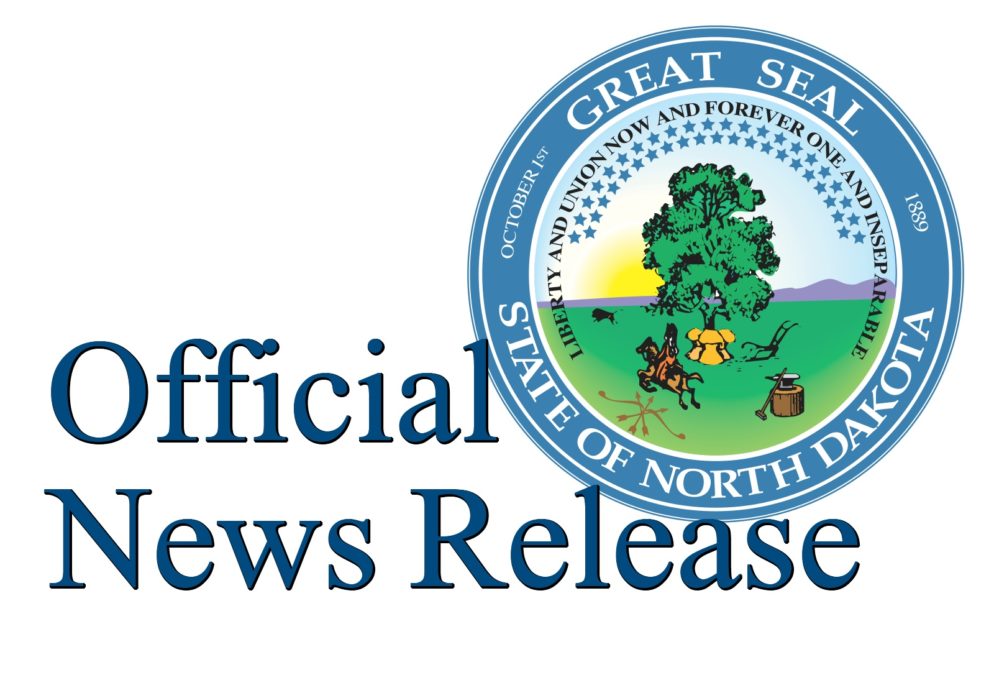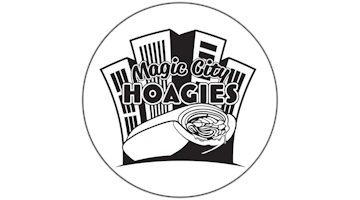You want a quick overview of everything that happened in the 2015 legislative session? Check out the news release from Governor Dalrymple’s office below.
— Official News Release, Governor Dalrymple —
Gov. Jack Dalrymple today said North Dakota’s 64th Legislative Assembly was highlighted by the passage of additional tax relief and property tax reform as well as strong investments in education, statewide infrastructure improvements, outdoor recreation and conservation, and continued support to meet the needs of North Dakota’s growing communities.
“Because of our long-standing commitment to sound fiscal management, including the Legislature’s foresight to maintain strong reserves for future needs, North Dakota remains well positioned to invest in its priorities for growth and progress and to provide even more tax relief,” Dalrymple said. “North Dakotans have every reason to be optimistic about their state and the increasing number of opportunities it provides.”
STATEWIDE INFRASTRUCTURE IMPROVEMENTS
Leading into the 2011 legislative session, Dalrymple initiated the most ambitious infrastructure improvement program in state history. In 2013, the Legislature provided record funding for statewide infrastructure improvements. The 64th Legislative Assembly again worked with Gov. Dalrymple to continue needed investments in highway improvements, county and township road upgrades, water supply systems, flood protection projects and other infrastructure enhancements.
Highways, Roads and Other Transportation Improvements
The Legislature appropriated about $2.3 billion to rebuild and repair state highways, county and township roads, bypass routes and other statewide transportation infrastructure. The funding includes:
- About $1.52 billion to repair and rebuild state highways in every region of the state.
- $570 million to repair and rebuild county and township roads.
- $109 million for city and urban transportation projects across the state.
- $10 million for six cities outside the state’s oil-production region. The Legislature appropriated the funding based on population and percentage of employment associated with oil and gas development. The funding is as follows:
- $4.31 million for Mandan
- $1.44 million for Bismarck
- $1.44 million for West Fargo
- $960,000 for Jamestown
- $960,000 for Fargo
- $960,000 for Grand Forks
Addressing Rapid-Growth Impacts in Western North Dakota
As part of the state’s ongoing commitment to helping the oil and gas counties meet the challenges of rapid growth, western North Dakota will continue to receive funding from a variety of sources, including an increased share of oil and gas gross production tax allocations; the Energy Impact Grant Fund; the Political Subdivision Allocation Fund and state agency budgets. Funding dedicated for western North Dakota includes:
- About $1.44 billion for state highway projects, county and township roads, and for city infrastructure improvements.
- About $621 million in oil and gas gross production taxes to be allocated as follows:
- $292 million to counties.
- $127.6 million to the “hub” cities of Williston, Dickinson and Minot.
- $28.3 to school districts within the oil region’s hub cities.
- $98 million to non-hub cities.
- $46.2 million to school districts in non-hub cities.
- $28.5 million for townships.
- $140 million in Energy Impact Grant funds to be administered by the North Dakota Department of Trust Lands. Since 2011, the state has provided $480 million in Energy Impact Grant funds alone. The Legislature designated the use of Energy Impact Grant funds for the 2015-2017 biennium as follows:
- $48 million for airport improvement projects.
- $30 million for school districts.
- $10 million for local law enforcement agencies.
- $10 million for critical access hospitals.
- $8 million for eligible counties.
- About $7 million in undesignated funding.
- $6 million for emergency medical services.
- $5 million for eligible political subdivisions.
- $4 million for nursing homes and hospice programs.
- $3 million for fire protection districts.
- $2 million for developmental disability services.
- $2 million for domestic violence and sexual assault support services.
- $2 million for district health units.
- $2.5 million for eligible cities.
- About $41 million in additional funding through the newly created Political Subdivision Allocation Fund.
Flood Control and Water Supply Projects
The Legislature appropriated $648 million from the Resources Trust Fund, the Water Development Trust Fund and other sources for permanent flood control projects and water supply projects that will serve communities throughout the state. The funding package includes:
- $113 million to advance flood control projects on the Sheyenne River, at Valley City and Lisbon, on the Mouse River and in Grafton.
- $69 million for permanent flood protection in the Fargo area and $60 million to move forward on interior flood control projects within the city of Fargo.
- $61 million for general water management efforts.
- $130 million for rural water supply projects, including the Western Area Water Supply (WAWS) project; Northwest Area Water Supply and the Southwest Water Pipeline project.
- $85 million for municipal water supply projects.
- $30 million towards construction of a new water treatment plant in Grand Forks.
- $20 million for the Central Dakota Water Supply project.
- $10 million in grant funds and $40 million in loan funds for development of a water reuse facility in Stutsman County.
- $25 million in state revolving loan funds for water supply projects.
- $5 million for continued development of the Red River Valley Water Supply project.
ADDITIONAL TAX RELIEF
Gov. Dalrymple has signed into law an additional $397 million in tax relief. Since 2009, Dalrymple has worked with the Legislature to reduce property and income taxes by more than $4.2 billion. The state’s 2015-2017 tax relief package consists of:
- $250 million in property tax reductions to be provided through a state-paid tax credit during the 2015-2017 biennium. With the continuation of this program, all North Dakota property owners will again receive a 12 percent reduction in property taxes.
- $123 million in individual and corporate income tax relief.
- $23 million in permanent property tax relief provided through a transfer of some social service costs from counties to the state.
- An expansion of the Homestead Tax Credit program for seniors who live on a fixed income. The Legislature appropriated an additional $1.2 million to support increased eligibility for property tax reductions during the second year of the 2015-2017 biennium. The program will save qualifying North Dakota taxpayers about $21 million during the biennium.
PROPERTY TAX REFORM
The Legislature followed Dalrymple’s recommendation to not only provide additional tax relief during the 2015-2017 biennium, but to also reform the state’s property tax system. The Legislature achieved lasting property tax reform by adopting the work of the Governor’s Task Force for Property Tax Reform which began analyzing the state’s property tax system in December, 2013. The 14-member task force analyzed all 200 mill levies authorized by all political subdivisions other than school districts, as well as the processes used to assess and collect property taxes for funding of local government services.
Significant property tax reform has already been achieved within the state’s school districts. The 63rd Legislative Assembly provided more than $850 million in property tax relief for the 2013-2015 biennium, including about $656 million provided through a new K-12 school funding formula that shifted the largest share of education costs from school districts to the state.
Senate Bill 2144 creates greater transparency so that taxpayers can more easily understand the uses of their tax dollars. The tax reform also provides for greater spending discipline and allows for more meaningful comparisons of property taxes levied among political subdivisions. Key elements in the property tax reform include:
- The consolidation of tax levies and the repeal of 40 others, some of which were created before statehood and have not been used for decades.
- Required anniversary votes of the people to ensure that taxpayers understand and support the continued use of their tax dollars.
- Mill levy limits for improved spending discipline.
- Greater flexibility for political subdivisions to develop their operating budgets.
EDUCATION
Early Childhood Education
The 64th Legislative Assembly has responded to Gov. Dalrymple’s call to establish a state grant program for early childhood education. The Legislature appropriated $3 million in state grants for certified pre-kindergarten programs that serve children who are at least four years old and qualify for free or reduced-price lunches. Pre-K programs must be approved by the Department of Public Instruction to be eligible for the voluntary grant program.
K-12 Education
Following the Governor’s recommendation the Legislature’s appropriation for K-12 schools includes a three-percent increase in the state’s per-pupil student payment in each year of the 2015-2017 biennium. This funding enhancement, combined with the added costs of higher student enrollments, represents an increased state commitment of $164.5 million compared to current biennium K-12 funding. About $104 million of the increased funding, or 63 percent, will cover the costs of increased student enrollments.
The Legislature also adopted the Governor’s recommendation to provide additional support to schools challenged by rapidly growing enrollments. The state will provide $14.8 million in rapid enrollment grants to schools that experienced enrollment growth of two percent or more. Additionally, the Legislature increased school transportation funding by $3.5 million and increased Special Education funding by $800,000.
To further assist school districts, the Legislature authorized the Bank of North Dakota to provide up to $250 million in low-interest school construction loans. Voters will also have an opportunity to decide whether the state’s Foundation Aid Stabilization Fund should be made available to finance school construction loans on a permanent basis.
Higher Education
The Legislature appropriated more than $961 million, including $879 million in General Fund dollars, to fund the state’s higher education system during the 2015-2017 biennium. The funding includes.
- A $4 million increase for merit-based scholarships, for a total funding level of $14 million during the biennium.
- A $4.4 million increase in needs-based scholarships, increasing the program’s total funding to $25.2 million.
- $23.5 million for the Higher Education Challenge Grant fund. The program is designed to stimulate the spirit of philanthropy for our colleges and universities. Every $2 in eligible, private donations will be matched with $1 in state funding.
- UND and NDSU are each eligible for $7 million.
- The state’s remaining nine institutions are each eligible to receive $1 million in state matching funds and for additional grants from a funding pool totaling $500,000.
- About $100 million for capital improvement projects, which are projected to offset about $35 million in deferred maintenance costs. The capital projects funded by the Legislature are:
| Project | Campus | General Fund Appropriation |
| Completion of the UND School of Medicine and Health Sciences | University of North Dakota | $62,000,000 |
| Heating plant replacement | Valley City State University | $14,289,000 |
| Nelson Science Center | Dakota Collage at Bottineau | $1,098,789 |
| Airport apron repair | University of North Dakota | $6,000,000 |
| Campus infrastructure improvements | Bismarck State College | $1,575,000 |
| Water and sewer infrastructure | North Dakota State College of Science | $13,298,000 |
| Electrical upgrades, window replacements | Lake Region State College | $1,648,423 |
| Total Capital Projects | $99,909,212 |
- The state’s colleges and universities were appropriated an additional $12.7 million for deferred maintenance, and are collectively required to dedicate $33.4 million of their operating budgets to address repairs.
- The Legislature also provided $77.2 million for the following one-time projects or initiatives:
- $800,000 for document digitization and operations of the Theodore Roosevelt Center at Dickinson State University.
- $2.5 million for extraordinary needs related to energy impacts at Williston State College.
- $2 million from the student loan trust fund for transitional leadership costs at Dickinson State University.
- $25.9 million for a fine arts building at VCSU, with funding contingent on performance of state general fund revenues.
- $46 million for the NDSU Dunbar Hall project contingent on performance of state general fund revenues.
ECONOMIC DEVELOPMENT
The 64th Legislative Assembly has supported Dalrymple’s initiatives for continued job creation, workforce development and economic growth in several ways:
- $7.5 million for further development of Grand Sky, the first commercial Unmanned Aerial Systems (UAS) business and aviation park in the nation. Of the funding, $3.1 million is dedicated for infrastructure development. The remaining $4.4 million is contingent on securing a second private-sector tenant.
- $4.5 million for Research North Dakota (RND) to commercialize technologies including those related to Unmanned Aircraft Systems (UAS) and biotechnology.
- $2.7 million for the Northern Plains UAS Test Site operations, with $1.2 million contingent on private-sector matching funds.
- $3.25 million for entrepreneurship grants and vouchers to assist startup businesses.
- $1.5 million for base retention grants in Minot, Grand Forks, and Fargo.
- $750,000 for tourism infrastructure grants.
- $1 million enhancement to market the state’s tourism offerings in Midwest markets.
- $247,836 enhancement for international tourism efforts.
Workforce Development and Retention
- $1.55 million for the Operation Intern program to provide internships, cooperative work experiences and apprenticeship positions with North Dakota employers. Includes $50,000 for teacher externship positions.
- $3 million for workforce training grants at tribal community colleges.
- $4 million in workforce development funds to educate and train North Dakotans for diversifying careers, and to promote industry-college partnerships.
- $300,000 for the Find the Good Life workforce recruitment initiative.
- $200,000 for rural healthcare workforce grants.
Fostering Responsible Energy Development
- $3.4 million for 17 additional staff at the Department of Mineral Resources (DMR) to assist with enhanced oversight of pipeline development, reclamation and other oil and gas regulation. Since 2011, the state has added 49 new staff positions within the DMR to enhance oversight of the oil and gas industry.
- The Legislature appropriated funding for five additional petroleum engineers within the DMR, contingent on benchmarks in oil rig counts.
- $253,345 for a full-time rail inspector within the Public Service Commission to augment the work of the Federal Railroad Administration. The Legislature also provided $200,000 for a temporary position to support enhanced railroad inspections throughout the state.
- $1.4 million for 10 additional staff members within the Department of Health to enhance the enforcement of environmental health regulations. The Legislature also funded eight environmental health positions in 2013.
- The Legislature has made available an additional $1.5 million to reclaim private and public land and water resources adversely impacted by oil and gas development prior to Aug. 1, 1983. Other pipeline safety enhancements in House Bill 1358 include:
- Operators of gathering pipelines are required to submit the results of independent pipeline inspections.
- Pipeline operators are required to provide the Industrial Commission with engineering specifications and drawings for all gathering pipelines.
- Pipeline operators must develop a plan for pipeline monitoring and leak detection.
- The passage of House Bill 1358 authorizes the North Dakota Industrial Commission to develop new rules involving the construction and operation of gathering pipelines. The bill includes $1.5 million to complete a study regarding construction standards and monitoring systems for gathering lines, which will guide the Industrial Commission’s consideration of new administrative rules. The study will be conducted by the University of North Dakota’s Energy and Environmental Research Center.
- The Legislature also established a pilot program within the North Dakota Department of Agriculture to provide technical assistance to landowners and surface tenants regarding pipeline reclamation projects.
- $13.6 million for the expansion of the Wilson Laird Core Library on the UND campus.
QUALITY-OF-LIFE ENHANCEMENTS
Public Safety
- $3.8 million for 16 additional positions within the Attorney General’s office, including eight additional criminal investigators, three intelligence analysts and two assistant attorneys general.
- $2.9 million for 16 additional parole and probation officers.
- $543,494 to fund two additional Highway Patrol troopers to be stationed in the Williston District. Since 2011, the North Dakota Highway Patrol has added 27 additional trooper positions.
- Passage of several bills that enhance protections for the victims of human trafficking and increase penalties for sexual exploitation. The Legislature’s commitment to fighting human trafficking includes:
- An extension in the statute of limitations to seven years for the prosecution of human trafficking cases involving adult victims. In cases involving minor victims, the statute of limitations for prosecution was extended to seven years from the time the victim turns 15.
- Increases from a class B felony to an class A felony the crime of inducing a minor to perform sexual conduct.
- $1 million appropriation for grants in support of organizations that provide prevention and treatment services involving human trafficking.
- Amendments to state law to enhance confidentiality for the victims of human trafficking, and to provide victims with a process to vacate and expunge a related conviction.
- The establishment of a statewide human trafficking commission to promote awareness and coordinate victim services.
Health and Human Services
Senate Bill 2012 allocated about $3.5 billion for the North Dakota Department of Human Services, with $1.3 billion allocated from the General Fund. This bill provides valuable services to North Dakotans, especially the state’s most vulnerable citizens including seniors and the disabled. The bill also provides funding for property tax relief by assuming the county share of certain county social service expenses. Highlights of the legislation include:
- An increase of more than $4 million to enhance access to behavioral health services across the state. This includes funding for an expansion of the Department’s mobile crisis response program; additional services to help individuals with mental illness or traumatic brain injury secure and maintain employment; and an expansion to the supported living capacity available for those with a chemical dependency or mental illness.
- An investment of nearly $3.5 million in home- and community-based services to help children and seniors remain in their homes and communities. Additional funding will be available for senior meals, vulnerable adult protective services, and autism services for children.
- An inflationary increase of more than $67 million for Medicaid providers such as hospitals, nursing homes, physicians, dentists and those who serve individuals with developmental disabilities. This funding enables important service providers to remain competitive and maintain a high standard of care across the state.
- $19.3 million to assume the county share of certain social service expenses and to relieve local property owners from these expenses.
- Additional funding of $1.2 million for Medicaid ambulance services to ensure ambulance providers remain viable and accessible throughout the state.
- An increase of about $42 million to support cost and utilization changes in programs such as Medicaid, foster care, Autism, and home and community-based care.
The Legislature also appropriated $195.7 million in state Health Department funding, including the following:
- An increase of $1.1 million for a total of $8.4 million for rural emergency medical services throughout the state.
- An increase of $250,000 for a total of $4.25 million to support the state’s local public health units.
- An increase of $200,000 for a total of $2.25 million in grants that support domestic violence and rape crises services.
- $1.4 million in total funding to expand the student loan repayment program to include behavioral health professionals.
- An increase of $576,853 for a total of $3.1 million for universal vaccinations at local public health units.
Other quality-of-life enhancements include:
- $2.25 million in grants to expand the availability of quality childcare services in the state.
- $1.5 million in grants to support homeless shelters.
- $2.65 million for grants for domestic violence shelters.
Housing Development
To further support the development of affordable housing in growing communities throughout the state, the Legislature followed Dalrymple’s recommendation to reauthorize the Housing Incentive Fund which the Governor first introduced in 2011. The Legislature provided $30 million in state income tax credits for citizens and businesses that invest in the state Housing Incentive Fund. Developers access this source of low-interest loans to develop low- and moderate-income housing. The Legislature also appropriated $10 million for a direct investment in affordable housing projects.
Additionally, the Legislature provided another $12 million in Flex PACE buydown funds to support residential construction during the 2015-2017 biennium. This investment is a strong incentive for builders and it will generate an estimated $150 million in private housing development.
Military and Veterans
North Dakota is committed to showing its veterans and our men and women in uniform our appreciation in tangible ways:
- $500,000 to continue the Veteran’s Bonus Program.
- $325,000 to assist veterans who are enrolling in North Dakota’s higher education institutions.
- $542,100 to establish ND Cares, a coalition of statewide service providers dedicated to providing an accessible, seamless network of support for service members, veterans and families.
- $139,000 to purchase land to expand the North Dakota Veterans Cemetery.
- $700,261 to continue funding five military outreach officers to help service members, veterans and families find the resources, services and benefits to meet their needs.
- $50,000 to purchase service dogs to assist veterans suffering from post-traumatic stress disorder.
- $20,000 for “Stand Down” events providing outreach services to homeless veterans and veterans in need.
- $75,000 to identify and provide assistance to North Dakota veterans who were exposed to Agent Orange during the Vietnam War.
- Expanded the state’s requirements for providing public employment preference to veterans.
Conservation and Outdoor Recreation
The Legislature appropriated $14.75 million for statewide park improvement projects that will enhance North Dakota’s outdoor recreation opportunities. The appropriation includes $3 million to purchase artifacts of the Lewis and Clark Interpretive Center in Washburn. The funding will also be used to improve visitor amenities throughout the state park system and expand visitation capacity as demand for park usage continues to grow. Improvement projects include the construction of new cabins and campsites, the restoration of earth lodges and improvements to camper electrical services.
The Outdoor Heritage Fund will receive as much as $40 million during the 2015-2017 biennium to expand and enhance North Dakota’s opportunities for hunting, fishing and all outdoor recreation experiences. From the fund, grants will be awarded to state agencies, tribal governments, political subdivisions and non-profit organizations for the preservation and enhancement of wildlife habitat, outdoor recreation opportunities and conservation projects.
AGRICULTURE
North Dakota’s farmers and agricultural businesses represent the state’s largest industry and they are critical to the continued growth of the state’s economy and our way of life. Some of the key measures approved during the legislative session include:
- $18 million for construction of a veterinarian diagnostics lab at NDSU’s main research center.
- $800,000 to construct a National Genomics Center in Fargo.
- An increase of $1.1 million for equipment upgrades at NDSU’s main research centers and branch centers.
- $800,000 for two agricultural scientists who specialize in bioinformatics.
- $75,000 in increased grant funding for soil conservation districts.
- $300,000 in spending authority for the Department of Agriculture to combat avian influenza.
RESERVES FOR THE FUTURE
The budget sets aside reserves of $2.242 billion by June 30, 2017. In addition, the state’s Legacy Fund, which cannot be accessed until 2017, will total an estimated $4.326 billion.
Budget Stabilization Fund $584 million
General Fund ending balance $211million
Foundation Aid Stabilization Fund $743 million
Strategic Investment and Improvements Fund $404 million
Tax Relief Fund $300 million
Total $2.242 billion



